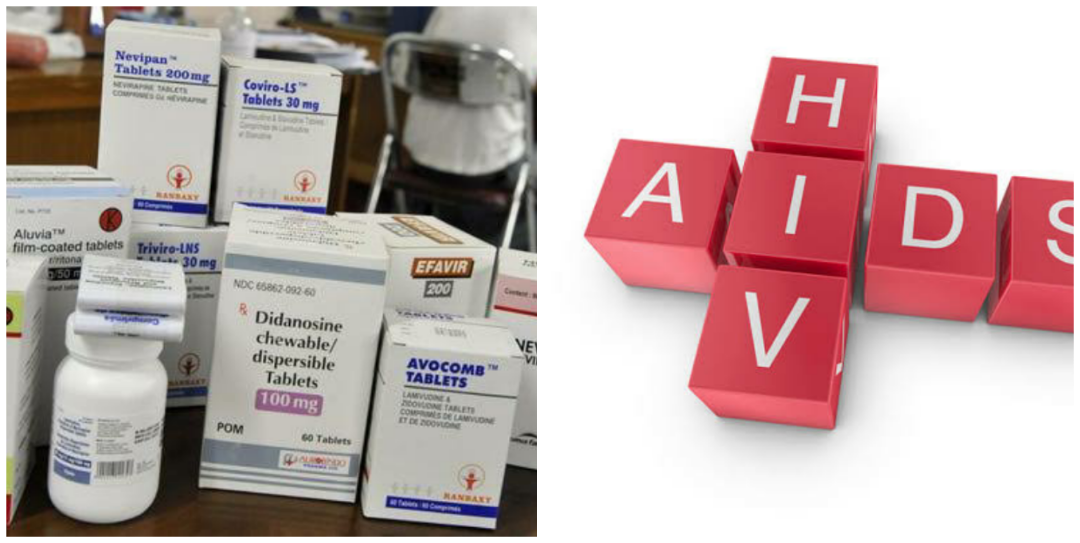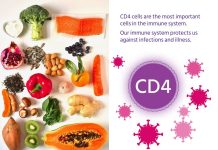Hiv statistics in Nigeria
I will start this article with the following albeit controversial and shocking headlines.
Nigeria ranks largest HIV epidermic nation- vanguard
600,000 persons are living with HIV/AIDs in Benue- Vanguard
16, 000 persons living in Borno died of HIV in 3 years- Vanguard
It is estimated that 36.7 million people are living with HIV/AIDs, 25.5million of these people living with HIV are in sub- sahara Africa. As at 2016, it was estimated that 3.2 million nigerians are living with HIV with one-third of the persons between the ages of 15-24 years. Half of the new cases of HIV in Nigeria each year occurs in youths under age 25. Of all HIV positive people world wide, 90% are in the developing world. It is estimated that each day 16, 000 more people are infected with HIV. More than 22 million people, including 3.6 million children, have died from AIDs since the start of the global pandemic. In 2004, nearly 14 million children have become orphans due to AIDs.
who is affected by HIV/AIDs in Nigeria?
HIV/AIDs mainly strikes adolescents, young adults, and those in early middle age, killing people in the prime of their lives. It has no regard for culture, tribe, colour, social class or religion. Unfortunately, most Nigerians are unaware they are infected with the HIV virus. Young women are more vulnerable than other age groups.
what is the prevalence of HIV in Nigeria?
In statistics, prevelance of a disease or any health related events means the total number of old cases (people already living with the disease) and new cases ( people newly diagnosed) of the disease usually in a year. The official HIV prevalence as published by UNAIDs in 2014 is 3.2% meaning a total of between 3.2 -3.4 million Nigerians are living with HIV/AIDs.
Below is a table showing the prevalence of HIV in Nigeria over the years stating from 1991:
1991 (1.8%)
1993 (3.8%)
1995 (4.5%)
1999 (5.4%)
2001 (5.8%)
2003 (5.0%)
2005 (4.4%)
2008 (4.6%)
2010 (4.8%)
2014 (3.2%)
Key: figures in brackets represent HIV prevalence
Comments and Observations on the table showing the Nigeria HIV prevalence above:
- HIV prevalence study in Nigeria is done every 2-3 years by the National Agency for the Control of AIDs.
- The survey started in 1991. HIV/AIDs was discovered in Nigeria in 1986, meaning valuable data from 1986-1990 are not available. Also you will notice that no study was conducted between 1995-1999. All these lapses and inconsistences makes data on HIV statistics in Nigeria controversial and highly disputed.
- There was a steady rise of HIV prevalence in Nigeria from 1991 to year 2003. What could be responsible for this? Maybe lack of awareness and poor enlightenment programmes couple with lack of actionable plans/target on the part of government in curbing the menace.
- Nigeria has had a steady decline in HIV prevalence from year 2005 till 2014. This is commendable and probably due to increased aware programs from the government, non-governmental organizations, religious houses and civil society organisations
In Nigeria, it is estimated that every 5 out of 100 persons (5%) has HIV/AIDs. The number of people living with HIV various from 1 to 12 in every 100 persons in the 36 states of the country. Contrary to widespread belief, Nigeria is NOT the country with the highest HIV/AIDs prevalence in the world, it is South Africa. According to the country’s HIV/AIDs agency, 10.9% of South African population are HIV positive. Nigeria has the second highest HIV prevalence in the world. India which used to be the first is now ranked third as 0.3% of the their adult population are HIV positive ( remember their population is in billions).
Now we are going to see the estimated number of people living with HIV in each of the states in Nigeria. First, we will look at the 2004 state by state HIV prevalence data and then the 2014 data. This will enable us know how well our state government, the federal government and other bodies are taking the fight against HIV/AIDs in our home states and in Nigeria.
State by state HIV prevalence in Nigeria, 2004 estimate
- Cross River (12.5%)
- Benue (10%)
- FCT (8%)
- Adamawa (7.5%)
- Akwa Ibom (7%)
- Niger (6.9%)
- Lagos (6.7%)
- Gombe (6.5%)
- Rivers (6.4%)
- Nasarawa (6.2%)
- Plateau (6%)
- Kaduna (5.8%)
- Taraba (5.6%)
- Kogi (5.5%)
- Delta (5.4%)
- Enugu (5.3%)
- Bauchi (5.1%)
- Ebonyi (5%)
- Sokoto (4.9%)
- Edo (4.8%)
- Kano (4.7%)
- Bayelsa (4.5%)
- Yobe (4.4%)
- Oyo (4.3%)
- Anambra (4.2%)
- Abia (4.1%)
- Zamfara (4%)
- Borno (3.6%)
- Imo (3.4%)
- Katsina (3.2%)
- Kwara (3%)
- Kebbi (2.7%)
- Ondo (2.5%)
- Ekiti (2.2%)
- Jigawa (2%)
- Ogun (1.8%)
- Osun (1.4%)
Above list is the 2004 estimate of States ranking of HIV/AIDs prevalence in Nigeria. Figures in brackets represent percentage prevalence.

Between 2009 and up till 2014, Benue state took “lead” of the state with the highest HIV rate in Nigeria. In 2015, HIV statistics(prevalence) in Nigeria changed with survey and study conducted and reported by NACA.
HIV statistics in Nigeria- states with the highest HIV rate in Nigeria
- Rivers (15.2%)
- Taraba (10.5%)
- Kaduna (9.2%)
- Nasarawa (8.1%)
- FCT (7.5%)
- Akwa Ibom (6.5%)
- Sokoto (6.4%)
- Oyo (5.6%)
- Benue (5.6%)
- Yobe (5.3%)
- Cross River (4.4%)
- Ondo (4.3%)
- Gombe (3.4%)
- Abia (3.3%)
- Bayelsa (2.7%)
- Osun (2.6%)
- Imo (2.5%)
- Borno (2.4%)
- Plateau (2.3%)
- Lagos (2.2%)
- Jigawa (2.1%)
- Adamawa (1.9%)
- Kogi (1.4%)
- Kwara (1.4%)
- Kano (1.3%)
- Enugu (1.3%)
- Niger (1.2%)
- Anambra (1.2%)
- Ebonyi (0.9%)
- Edo (0.8%)
- Kebbi (0.8%)
- Delta (0.7%)
- Bauchi (0.6%)
- Ogun (0.6%)
- Zamfara (0.4%)
- Ekiti (0.2%)
Above are the states with the highest HIV rate as published in 2015 by NACA.
Rivers is now the state with the highest hiv prevalence in Nigeria followed by Taraba, Kaduna, Nasarawa and Abuja.
Benue used to be the state with the highest HiV prevalence rate in Nigeria, but due to dedicated and collaborative efforts of Benue State Action Against Control of Aids (BENSACA) and other partners, the state had dropped to the 9th spot in the country.
What about you home state on the the list? Has it dropped or climbed the ladder?
Nigeria has made progress in reducing its HIV prevalence but analysts and even the Director General of NACA, Dr Sani Aliyu, thinks we can do better. In his words:
Here in Nigeria, we have recorded a steady decline in HIV prevalence from a peak of 5.8% in 2001 to 3.2% in 2014. But this has not been an easy ride and challenges still exist- condom use is still too low and covers less than half of our need in Nigeria (Sub-saharan Africa). There is a dearth of knowledge on HIV among young people, with only a third having enough knowledge to safeguard themselves.
Dr Sani Aliyu, DG NACA
Why the steady/increasing prevalence of HIV in Nigeria?
Statistics of HIV in Nigeria published have shown steady or slow decline in HIV incidence or prevalence in Nigeria.
Below are reasons we are making slow progress in combating the menace:
1. Stigma and Denial
Some people may feel isolated and rejected. The social stigma associated with HIV prevents people from getting tested and knowing their status. The first step in curbing the spread of HIV and hence reducing the prevalence in Nigeria is by knowing your status and accepting your status and starting treatment immediately.
2. Civil strife and insurgency
The context of war and struggle for power spreads HIV/AIDs. For Bokoharam since its inception in North-Eastern Nigeria has lead to the increased prevalence of HIV in that region especially Yobe, Adamawa and Borno.
3. Cultural factors have made reducing the negative HIV statistics in Nigeria difficult
Traditions, beliefs and practices affect understanding of health and disease and acceptance of conventional medical treatment. Culture can create barriers which prevent people, and especially women, from taking precautions. For instance, pressure to breastfeed may expose more infants to HIV. Also, spousal inheritance in many African traditional settings may expose many people. Similarly, the pressure to bear children as we’ll as cultural and religious practices inhibits condom promotion in many places.
4. Poverty
Poverty can lead to lack of information needed to understand and prevent HIV in Nigeria. Poor nutritional status often results from poverty and increases the risk of contracting HIV/AIDs. Commercial sex for income and reduced access to health services have shifted the HIV statistics in Nigeria to the negative side.
5. Gender inequalities
In many cultures in Africa (Nigeria), men are expected to have many sexual relationships, unlike women. A woman may suffer the consequence of being sent packing out of her matrimonial home if she complains about her husband having an affair with another woman. Women suffer gender inequalities and it is often economic in nature. Women may not feel empowered to negotiate whether sex happens at all or to negotiate condom use.
My summary of HIV statistics in Nigeria
Nigeria is a country of 170 million peoples.
Out of the 170 million Nigerians, 3.2 million are living with HIV/AIDs.
Out of the 3.2 Million persons infected with HIV, only 750,000 (20%) are on anti-retroviral (ARV) treatment.
95% of those on ARV are on donor funding (free drugs and treatment)
Nigeria HIV prevalence is 3.4%.
Rivers state has the highest HIV prevalence in Nigeria.
Many Nigerians still don’t know their status.
The fight against HIV in Nigeria must be sustained by not only government but by everybody. Contribute your quota to reducing the negative HIV statistics in Nigeria.
Do know your status? Please check out where you can get tested in Nigeria here.























